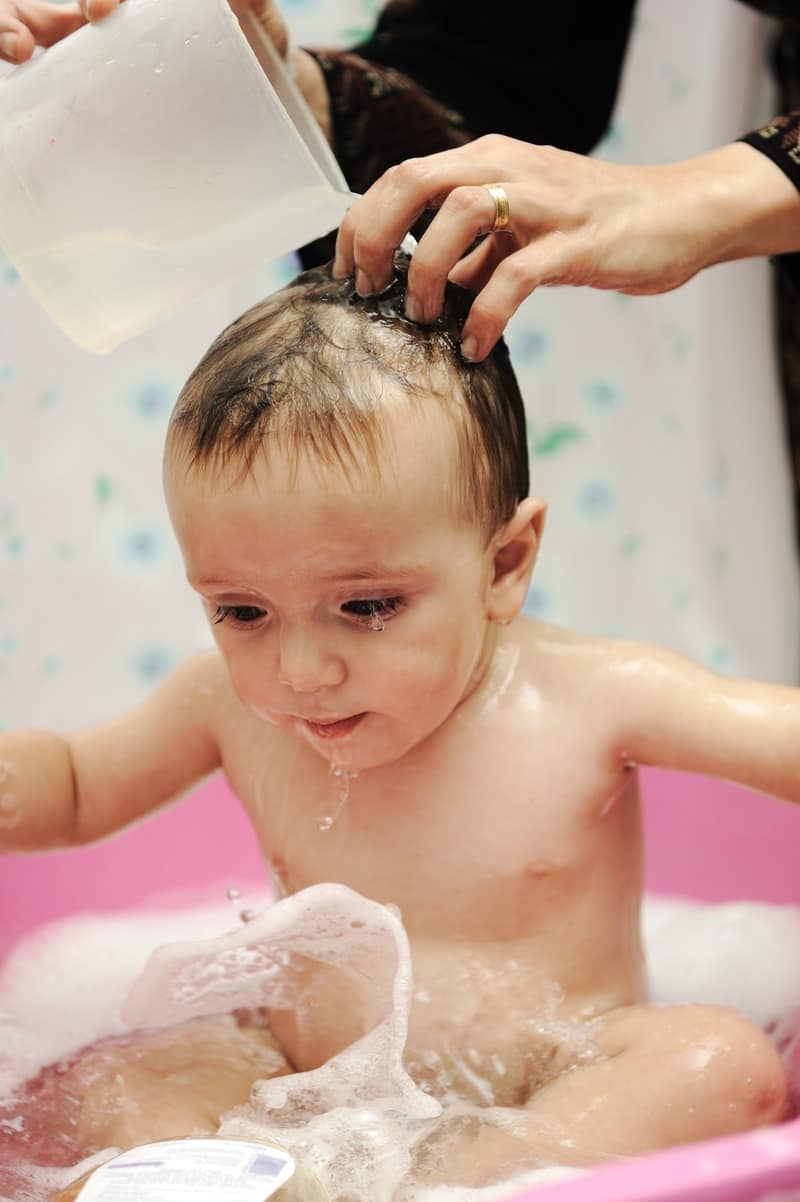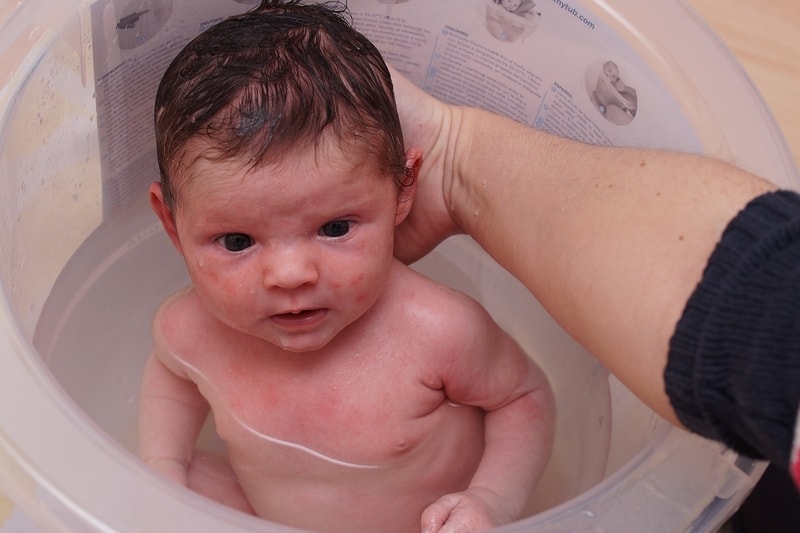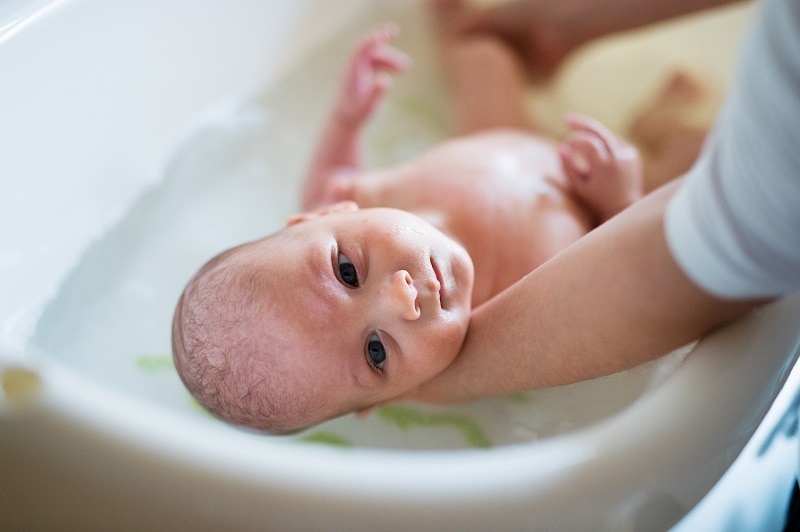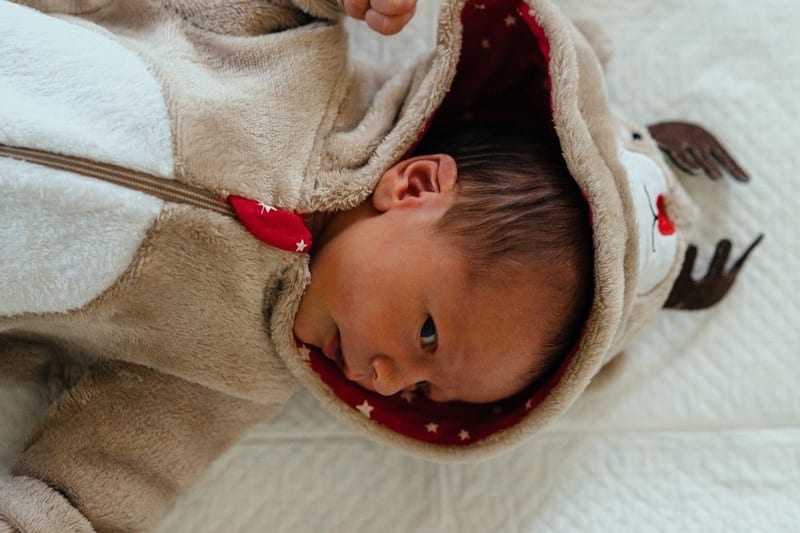Hygiene is an important aspect of baby care. Daily bath is essential to keep your baby clean and fresh. You can bathe your baby anytime, but it is advisable to do so before a feed. Bathing your baby too soon after a feed can cause your baby to be uncomfortable and your baby can spit up milk. If it is your first time bathing your newborn, you will probably feel anxious. You will gain confidence with constant practice and your baby will get used to bath time and enjoy it. Most babies find warm water soothing. A bath may help a fussy baby to relax and calm down. If you are still new to baby bathing, you may want your spouse to help you. You will need the following items to give bath to your newborn baby. To bathe your baby, you will need:
- A bathtub.
- Jug of Warm Water.
- Cool boiled water.
- Cotton wool balls.
- Bin or a plastic bag (to contain soiled cotton wool balls).
- Face cloth.
- Towel.
- Baby Bath Soap.
- Baby clothes.
- A Diaper.
- Baby wrap (if necessary).
Before you start, do remember to wash your hands with soap and water. Ensure that you have all the necessary items. Remember; never leave your baby unattended during bath time
Step 1: Preparing the Bath
Fill the basin with cold water first, then warm water, up till one third level of the tub. Mix the water well and use the inner part of your forearm to test the temperature of the water. Make sure it is comfortably warm and not too hot. Squeeze 2 drops of baby soap into the water and mix well. Place your baby on the bath towel and gently remove the vest. Talk to your baby so that he feels reassured. Leave his diapers on and wrap him up with the towel, keeping his hands and feet wrapped within the towel.
Step 2: Cleaning your Baby’s Eye
Dip the cotton ball into the cool boiled water and squeeze out the excess water. Clean your Baby’s eye by starting from the inner corner of the eye and move outwards. Use a new piece of cotton ball for each eye and clean it in one stroke. Do not reuse the same piece to clean back and forth. Observe for any sticky or yellowish discharge around your baby’s eye and bring him to the doctor if the discharge persists
Step 3: Cleaning your Baby’s Face
Wash your baby’s face using cool boiled water. You can either use a face cloth or cotton balls dipped in the water. Clean your baby’s face from the centre outwards, making sure you wipe the forehead, the nose, the cheeks and the mouth area.
Step 4: Washing your Baby’s Hair

Carry your baby using a ‘football hold’ with the palm of your hand supporting his head and neck. Tuck your baby between your arm and the side of your body. Tilt his head slightly backwards over the bath basin and wash his hair. Then, dry his hair gently with a corner of the towel wrap. Place your baby on the table to unwrap him and remove his diaper. If your baby is soiled, clean his buttocks area with wet wipes. Wash your hands after cleaning if your baby has passed motion. You are now ready to place baby into the tub of the water for his bath.
Read Also: Easy Steps and Tips on How to Diaper a Baby
Step 5: Washing your Baby’s Body

Position your left hand under baby’s shoulder to support it and hook your fingers under the baby’s armpit to have a good grasp. Slight your right hand under the buttocks and grip the baby’s thigh and lift your baby in the bath tub. Allow your baby to sit in the tub with your left hand still supporting your baby’s shoulder, while keeping your baby’s head above the water level. Release your right hand grip and bathe the baby’s front and private area with the help of a face cloth. Use your right hand to take over the grip under the baby’s armpit and allow him to lean forwards over your right arm while you clean his back and buttocks with your left hand. Talk and sing to your baby as you bathe him to make bath time enjoyable. When you are done, lift him out of the water the same way you brought him in. place your baby gently onto the towel and pat him dry. Pay attention to the skin folds and be sure to dry behind the ears, in between his fingers and toes, under his armpits and private area. Before dressing your baby, be sure to clean up the umbilical area. The umbilical cord will drop off in about 5 to 7 days. If you notice any bleeding or foul-smelling discharges, you should re-clean the cord and consult a doctor if symptoms persist.
Step 6: Cleaning your Baby’s Umbilical Cord

Wash your hands before cleaning the umbilical cord. Use cotton balls dipped in cool boiled water and squeeze dry to clean the base of the cord with one circular motion. Discard the swab after use. Clean the sides of the cord with the clean swab from the base upwards, each time using a new piece of swab. Clean the cord clamp and the tip of the cord.
Step 7: Dressing your Baby

Do not overdress your baby. Wear clothes that are comfortable for the environment. You may apply motion on your baby before dressing him up, but baby powder is not encouraged.
Cuddle your baby often to reassure him. Do encourage your spouse to take part in bathing your baby as it is a wonderful opportunity for bonding. With your baby feeling clean, fresh and comfortable, it is time for a good feed. Babies usually sleep better after a warm bath too. Practice makes perfect. All moms and dads can do it!
Read Also:













